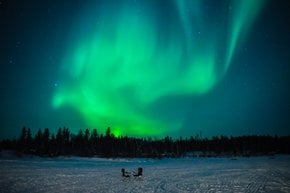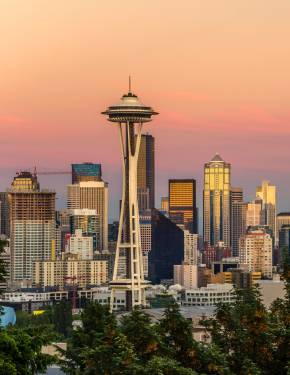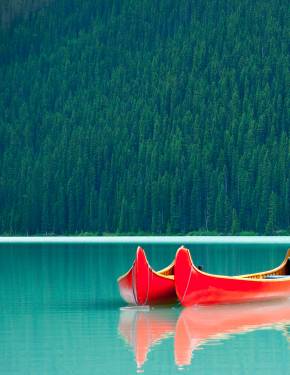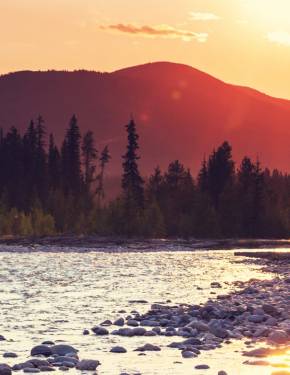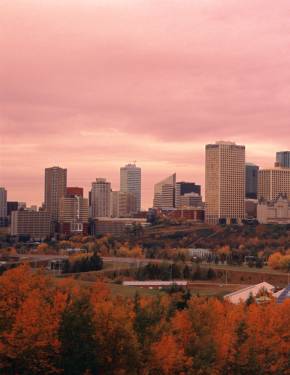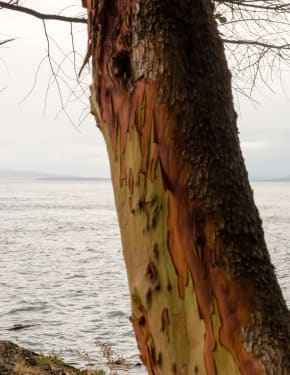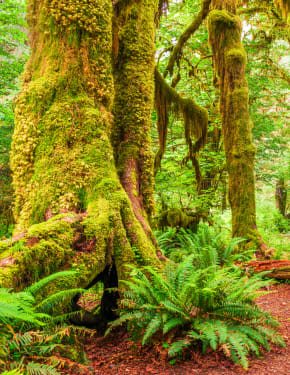Reindeer Herd in Northwest Territories 2026
Witness nearly 3,000 reindeer on the barren landscapes by the Arctic Ocean
Best time: late March–early April
Every year, the reindeer (caribou) migration in Canada's Northwest Territories offers a rare opportunity for wildlife enthusiasts to observe these majestic animals as they move from their wintering grounds to their calving areas. Although the ice road along the Mackenzie River, once a crucial route for this migration, officially closed in 2017, the reindeer continue to follow their traditional patterns. Visitors can still experience the migration, but reaching the herd requires coordination with local tour operators.
When and Where to See the Reindeer Migration
The migration typically takes place in late March or early April, coinciding with the seasonal transition. During this time, the reindeer travel from their wintering grounds near Jimmy Lake, located about 22 miles (35 km) from Inuvik, to the calving grounds on Richards Island near the Beaufort Sea. Although exact dates vary depending on weather conditions, the herd generally follows this pattern each year.
Access Points and Viewing Locations
To witness the migration firsthand, it's essential to contact local tour operators, as the reindeer herd is not easily accessible on your own. Several guided tours offer transport to safe viewing spots, where visitors can watch the animals without disturbing their natural behavior. According to the organizers, prices for these tours vary depending on the duration and services included, typically ranging from $200 to $500 per person.
Organized Tours and Excursions
Local travel operators provide a variety of tours that range from short viewing trips to multi-day expeditions, complete with opportunities to learn about Indigenous traditions and the region's unique ecosystem. These tours often include snowmobile rides, educational presentations, and guided walks near the migration routes. Prices fluctuate depending on the package, with some high-end tours offering all-inclusive experiences.
Infrastructure
The nearest access points for observing the reindeer migration are Inuvik and Tuktoyaktuk, both located in the Northwest Territories. Inuvik, a hub for arctic tourism, provides essential amenities such as accommodation, dining options, and transportation services. Tuktoyaktuk, further north along the Arctic Ocean, offers a more remote experience with limited infrastructure, making it an appealing option for adventurers seeking a less commercialized visit.
Both towns can be reached via flights from Yellowknife, the capital of the Northwest Territories, and transportation from the airport to local hotels is typically arranged by tour operators. For those looking to camp, several options are available around Inuvik, though advance reservations are recommended due to the region's popularity during migration season.
Responsible Wildlife Viewing
It’s crucial to respect the reindeer’s natural environment while observing their migration. As experts advise, visitors should maintain a safe distance from the herd to avoid disturbing their movements, especially during calving season. Reindeer can be sensitive to noise and sudden movements, and bright colors may alarm them, so neutral clothing is recommended. Additionally, feeding the animals is strictly prohibited, as human interaction can negatively affect their health and migration patterns.
Fascinating Facts About Reindeer
Reindeer, also known as caribou in North America, are remarkably adapted to the harsh Arctic conditions and are renowned for their extraordinary migrations. Caribou undertake the longest land migrations of any animal, with some herds in Alaska and Canada traveling up to about 839 miles (1,350 km) annually in search of food, mates, and calving grounds. This distance is roughly equivalent to the journey from Los Angeles to Portland, Oregon, showcasing their endurance.
In addition to their migratory prowess, reindeer have evolved unique traits to survive extreme cold. Their thick fur traps insulating air, allowing them to endure temperatures as low as -76 °F (-60 °C). Furthermore, they are the only mammals known to perceive ultraviolet light, an ability that helps them navigate the bright, reflective snow-covered terrain. Despite these challenging environments, reindeer can reach impressive speeds of up to 40 mph (70 kph), enabling them to cover vast distances and evade predators.
Caribou migrations are so extensive that even other species, such as the gray wolf, follow them across long distances, emphasizing their critical role in Arctic ecosystems.
Other Attractions Nearby
While visiting the Northwest Territories, travelers can also explore other natural wonders. The nearby Ivvavik and Aulavik National Parks offer spectacular views of the Arctic tundra, along with opportunities to see caribou, muskox, and polar bears. The famous Tuktoyaktuk Pingo National Landmark, with its striking ice-cored hills, is another must-see in the area.
Put this beautiful wildlife encounter on your bucket list, and bear in mind that warm clothes are paramount since the temperatures can drop down to -22 °F (-30 °C) with accompanying strong winds.






























































